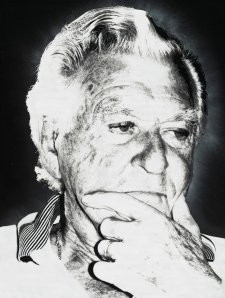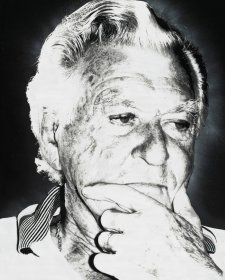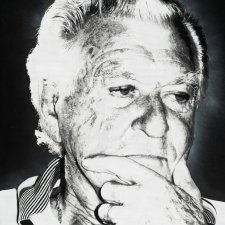Sue Ford (1943-2009), photographer, filmmaker and photo-media artist, was the first woman photographer to be given a solo exhibition at the National Gallery of Victoria. Making many key images exploring women’s everyday lives and the politics of representation in the 1970s, during the late 1980s Ford became increasingly interested in indigenous issues, race, representation and colonisation.
In 1988, Sue Ford attended the Barunga festival of culture and sports. The then prime minister, Bob Hawke, and Aboriginal affairs minister Gerry Hand visited the festival to meet with senior Aboriginal men. They included Gamatj clan leader Yunupiŋu AM (1948-2023), who had known Hawke for years. Yunupiŋu had helped his father, Mungurrawuy Yunupiŋu, draft the famous Bark Petition of 1963 to Federal Parliament, launching the first native title case in Australia. In 1968 when the Yolgnu obtained writs against Nabalco Corporation, Yunupiŋu acted as court interpreter in the Gove Land Case. He became chairman of the Northern Land Council in 1977 and was the key negotiator for the Mirrar people in the Ranger uranium mine deal, securing the lease for Kakadu National Park in November 1978. For this he was named Australian of the Year for 1978 (his brother, Mandawuy Yunupiŋu AC, was Australian of the Year for 1993). With other senior Aboriginal leaders including Wenten Rubuntja, in 1988 he drew up and presented to Bob Hawke another bark petition – the Barunga Statement, bearing a written proposal for Aboriginal self-determination. Hawke hung it in Parliament House on his last day in office. Yunupiŋu's is the voice chanting in Yolngu-Matha language on the hit song 'Treaty', an attempt to hold the government to account over its promise for a treaty by 1990. There are photographs of Yunupiŋu at separate meetings over decades with Malcolm Fraser, Paul Keating, Kevin Rudd, Julia Gillard and Tony Abbott. He wrote a brilliant if dispiriting essay, 'Tradition, Truth and Tomorrow' for the Monthly magazine of December-January 2008-2009, recounting the meeting with Hawke, other such 'historic' meetings, and their negligible outcomes.
Purchased 2015
© Sue Ford/Copyright Agency, 2024
Sue Ford (age 45 in 1988)
Bob Hawke (age 59 in 1988)
Yunupingu AM (age 40 in 1988)



On one level The Companion talks about the most famous and frontline Australians, but on another it tells us about ourselves.



Seventeen of Australia’s thirty prime ministers to date are represented in the contrasting sizes, moods and mediums of these portraits.



Visit us, learn with us, support us or work with us! Here’s a range of information about planning your visit, our history and more!